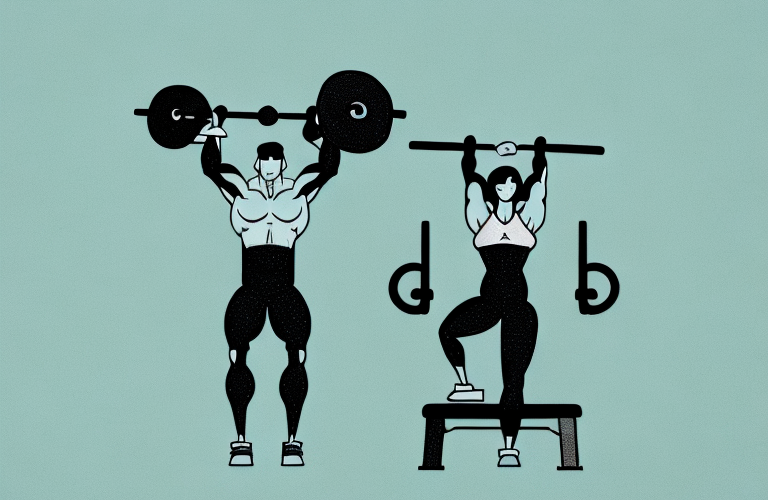When it comes to exercising and working out, there are many different approaches one can take. CrossFit has become an increasingly popular choice for those looking to get in shape, but how long does it take to see results? Let’s dive into the world of CrossFit and explore the benefits, factors that affect results, typical timeline, and how to measure progress.
Factors Affecting CrossFit Results
CrossFit is a popular and effective fitness program that can help individuals achieve their fitness goals. However, there are various factors that can affect how quickly someone sees results from CrossFit. In this article, we will explore some of the key factors that can impact your CrossFit journey.
Individual Fitness Level
One of the most important factors that can affect your CrossFit results is your starting fitness level. If you are already relatively fit, you may see improvements in your performance and physique sooner than someone who is starting from scratch. However, this does not mean that CrossFit is only suitable for those who are already fit. CrossFit is a scalable program that can be adjusted to meet the needs and abilities of individuals at all fitness levels.
For beginners, it is important to start with a foundation of basic movements and gradually progress to more advanced exercises as your fitness level improves. This will help prevent injuries and ensure that you are building a strong foundation for long-term success.
Workout Frequency and Intensity
The frequency and intensity of your workouts can also have a significant impact on how quickly you see results from CrossFit. Consistent and intense workouts may lead to faster improvements in strength, endurance, and overall fitness. On the other hand, less frequent or less intense workouts may take longer to show results.
It is important to find a workout schedule and intensity level that works for your individual needs and goals. For some individuals, working out 3-4 times per week may be sufficient, while others may benefit from more frequent workouts. Similarly, some individuals may thrive on high-intensity workouts, while others may prefer a more moderate approach.
Nutrition and Recovery
Proper nutrition and recovery are also crucial factors when it comes to seeing results from CrossFit. Eating a healthy, balanced diet can provide the energy needed for intense workouts and help support muscle growth and recovery. On the other hand, a poor diet can hinder your progress and lead to fatigue, injuries, and other health issues.
In addition to nutrition, recovery is also important for achieving optimal results from CrossFit. This includes adequate rest and recovery time between workouts, as well as strategies like foam rolling, stretching, and massage therapy to help prevent injuries and promote muscle recovery.
Genetics and Age
While genetics and age cannot be changed, they can still play a role in how quickly you see results from CrossFit. Some individuals may naturally be predisposed to certain physical traits, such as increased muscle mass or endurance. Similarly, age can affect things like muscle mass and recovery time.
However, it is important to remember that genetics and age are not the only factors that determine your CrossFit success. With dedication, hard work, and a commitment to proper nutrition and recovery, individuals of all ages and genetic backgrounds can achieve their fitness goals through CrossFit.
In conclusion, there are various factors that can affect your CrossFit results. By focusing on individual fitness level, workout frequency and intensity, nutrition and recovery, and genetics and age, you can optimize your CrossFit journey and achieve your fitness goals.
Typical CrossFit Results Timeline
First Month: Building a Foundation
In the first month of CrossFit, many people focus on building a strong foundation of skills and proper form. During this time, you may not see significant physical changes, but you may notice improvements in your overall fitness level and endurance.
Second Month: Gaining Strength and Endurance
During the second month, many people start to see improvements in their strength and endurance. You may notice that you are able to lift heavier weights or perform more reps than before.
Third Month: Visible Physical Changes
By the third month of CrossFit, you may start to see more visible physical changes, such as increased muscle definition or weight loss. These changes can be motivating and encourage you to continue with CrossFit.
Beyond Three Months: Continued Progress and Goal Setting
After three months of consistent CrossFit training, many people continue to see progress and improvements. Setting new goals and challenging yourself can help ensure continued progress and prevent plateauing.
Measuring Your CrossFit Progress
Tracking Workout Performance
One way to measure progress in CrossFit is to track your workout performance over time. Record the weights you lift and the number of reps you complete, and look for improvements and increases in these numbers over time.
Assessing Body Composition Changes
Another way to measure progress is to assess changes in your body composition. This may involve measuring body fat percentage, taking progress photos, or simply noticing changes in how your clothes fit.
Monitoring Energy Levels and Sleep Quality
Finally, paying attention to energy levels and sleep quality can help indicate progress and improvements in overall health and fitness. If you feel more energized and well-rested, this may be a sign that your CrossFit training is benefiting you.
Overall, the timeline for seeing results from CrossFit varies depending on individual factors and how consistently and intensely you train. However, by focusing on building a strong foundation of skills and form, challenging yourself with heavier weights and increased workout intensity, and paying attention to nutrition and recovery, you can set yourself up for success in the world of CrossFit.
